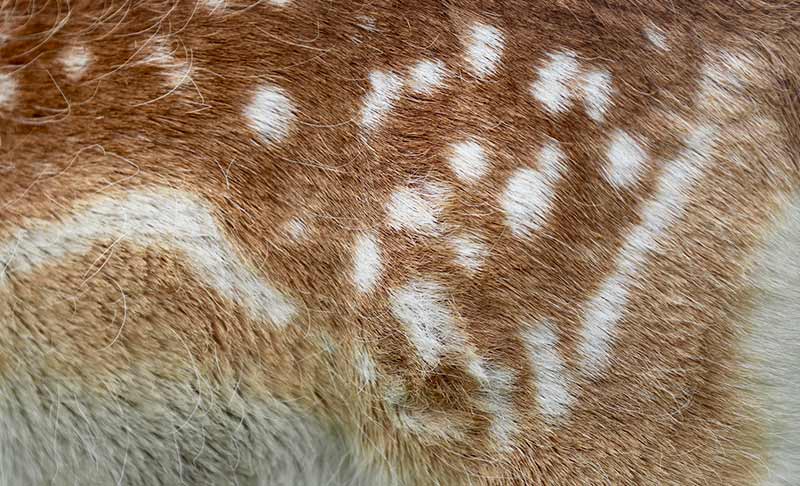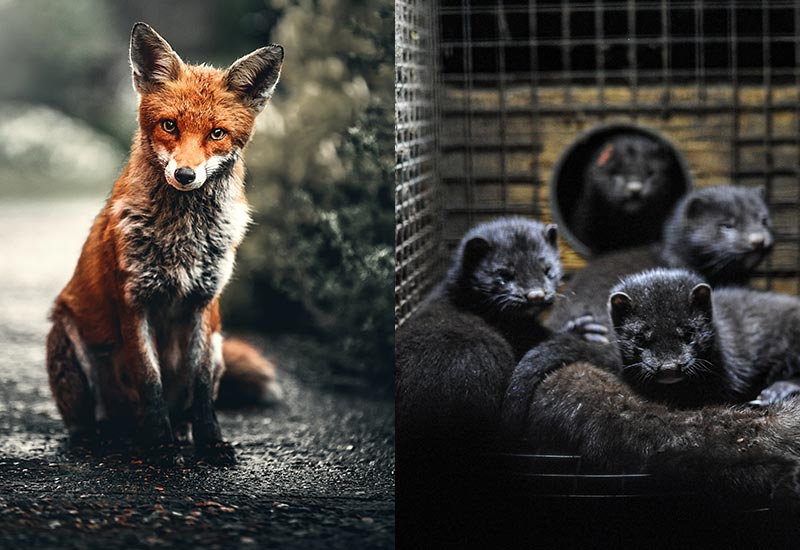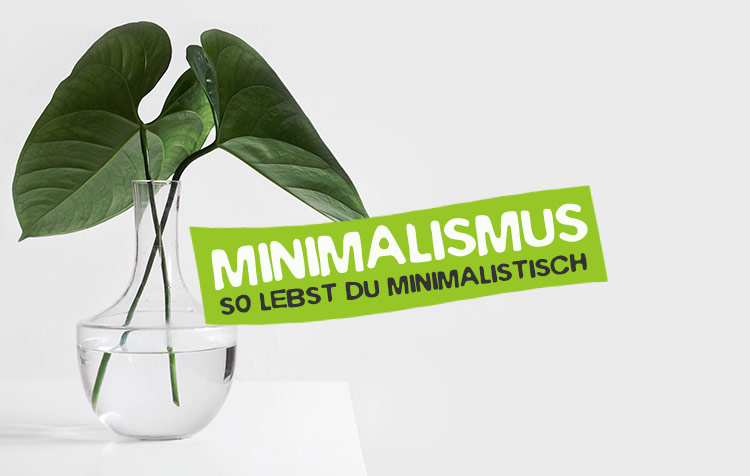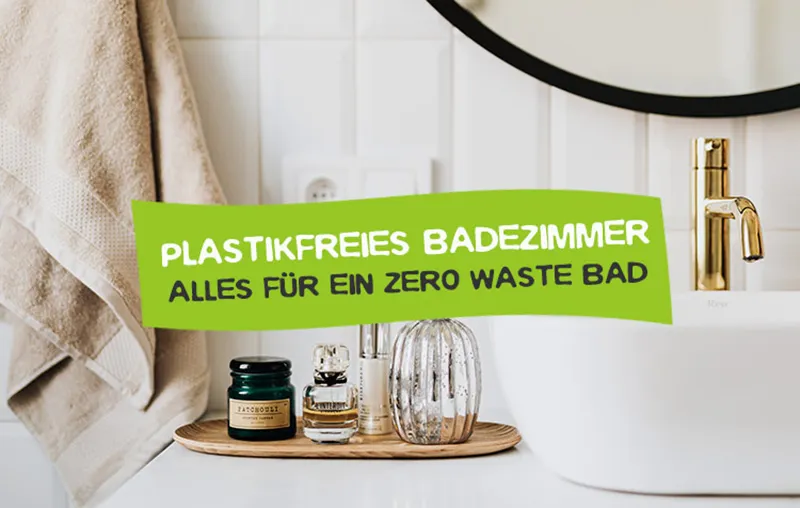How to recognize real fur and distinguish it from artificial fur? If you're asking yourself this very question and would like to wear only animal-friendly clothing in the future, you've come to the right place. 65 million fur animals, such as foxes or minks, are bred, killed and skinned every year for the fur industry and our desire for fur clothing.₁ So how can you recognize and specifically avoid such real fur products? One thing is clear: by looking at the price of a jacket with a fur hood or a key pendant with a fur pom-pom, it's hard to tell today whether it's real fur or fake fur. So other ways and means are needed to recognize real fur.
In this article, I'd now like to introduce you to some of these options so that you can steer clear of fur and fur clothing made from the skin of real animals in the future.
Tip: In the article Background of the fur industry you can find out even more reasons not to use fur and animal skins. And if you want detailed facts & figures, then take a look at Fur statistics over.
6 Tips - How to recognize real fur and distinguish it from fake fur?
The lives of animals in the fur industry is certainly something we wouldn't wish on even our worst enemy. And our treatment of these innocent animals is something our children and grandchildren will one day look back on with disgust. The short life of our furry "friends" in cramped cages - which usually have only one grid floor. Life with Psychosesthat any of us would get if we were permanently confined to one square meter.
Let's do something against this unnecessary injustice. Now you can find out how you can easily and quickly recognize and specifically avoid goods made of or containing real fur. Let's go!
1. hold or blow into the wind
Faux fur is very firm, rigid and heavy - and blows around rather evenly. Real fur, on the other hand, you can recognize by the fact that the upper hairs (the top hairs) rather light and wild blowing aroundas is probably the case with your own hair.
Real fur test: Blow into the fur or hold it in the wind and observe the behavior of the hair.
2. pull apart fur
A faux fur has all the way down at the hairline a textile layer. If you see a small piece of fabric there with the hair attached, that's a good sign that it's not real fur. The latter you would recognize with this test method by the fact that in the same place Leather skin can be seen.
Real fur test: Pull the hair of the coat apart or brush it aside until you can see what is holding the hair together.
3. coloring, length and tips of the hair.

In the case of fur made from real animal hair, the hairs usually have distinctly different lengths at their ends - while artificial fur is more recognizable in that the hair lengths are very uniform. Besides the Length differences you can tell real fur and fake fur apart also by the fact that they are Different hair tips have. Hair from animals are quite pointed, while artificial hair cut quite straight. Also the coloring and Pattern on the fur can be an indication of the skin of a real animal.
Real fur test: Take a searching look at the length and ends of the hair.
4. check labeling
Whether fur collar or cap with fur pom-pom: as soon as a fur product contains animal fur, a manufacturer must According to the EU labeling obligation, the consumer information "Contains non-textile parts of animal origin" attach. So in theory you can recognize real fur and distinguish it from fake fur by the label. Unfortunately, nowadays many non-labeled fur products are also made of real fur. Therefore this test method gives you unfortunately no absolute guarantee.
Real fur test: Take a look at the labeling of the product.
5. check for undercoat
Real fur always has a natural, light, fluffy and curly undercoat, which protects animals from sunlight, moisture and cold. This refers to the wool hairs under the outer hairs of the coat. This undercoat also blows very easily, even if you blow only minimally. On the other hand, if a fur has no undercoat at all, this is basically a clear indicator of artificial fur.
Real fur test: Pull the fur apart and see if there is any undercoat there that looks different than the top coat.
6. burning test with the lighter
Of course, this test only makes sense, if the item already belongs to you or a friend. So don't start setting fire to any fur collars in the shopping mile. 😉
Basically you can use the Burning behavior of individual hairs from the fur or fur very well recognize whether it is real fur or artificial fur. Artificial hair forms small lumps and smells like burnt Plastic. Real hair from animals smells like burnt hair or horn. If you, like my wife, often use a straightening iron, you may already know this smell.
Real fur test: Take out a few hairs of the fur and light them with the lighter to observe burning behavior and smell.
Recognize real fur - and never buy again

Anyone who has not had a problem buying real fur should definitely watch this short documentary on YouTube. I immediately wanted to learn how to tell real fur from faux fur after that - and had no desire to buy or wear any fur products at all.
It is tremendously important, in my opinion, To realize that they are real, feeling, innocent animalswho have to die unnecessarily for their own style of clothing, although they do not have to die. Not wanting to support this out of a shopping lust and whim stands for compassion, mercy, love - and many other, positive, human values. Anyone who could see the suffering of the animals for the real fur jacket in the shop window would probably call the police rather than buy the finished end product.
Do you have questions about how to recognize real fur and the differences to faux fur? Then, as always, feel free to write me a comment.
Be always kind to animals,

PS.: To recognize whether a fur or pelt is real or not is an essential part of the vegan life. If you want to know, why i live vegan, then just check out my linked post.
References:
₁ F. Schreckenbach: Why furs are back or were never gone: The Fur World in Numbers (infographic, 2013), available at https://t1p.de/6u50. [20.05.2020].




